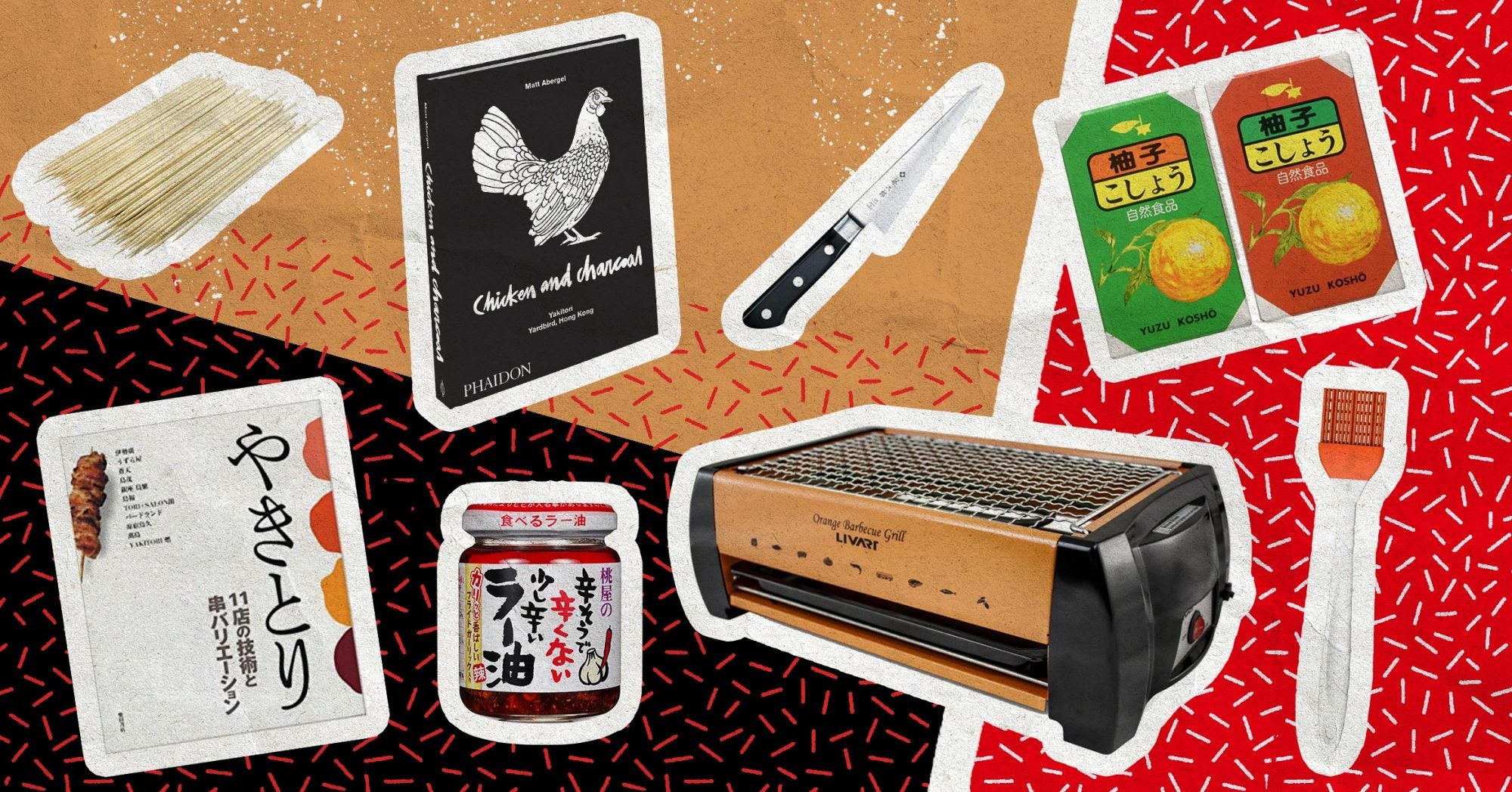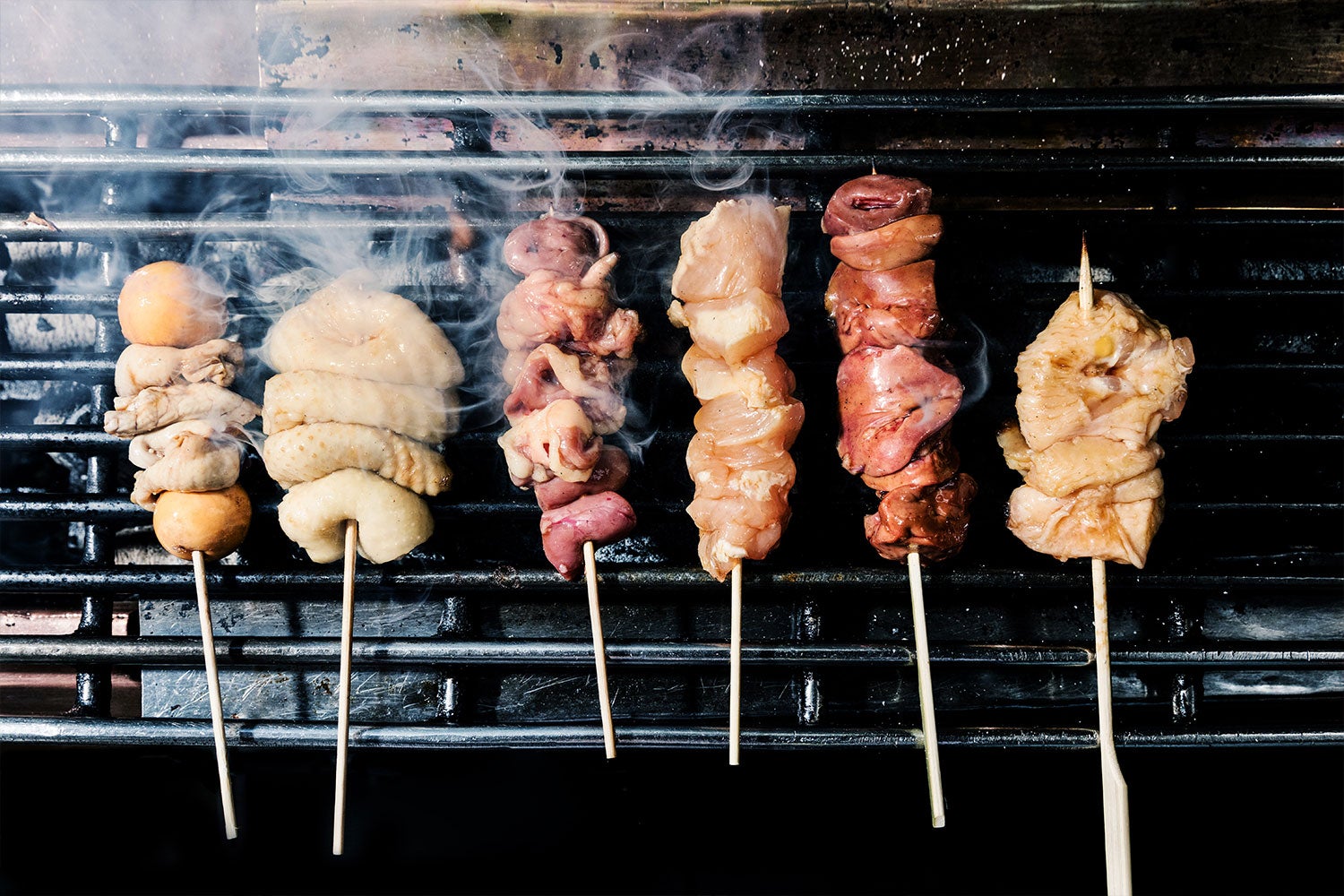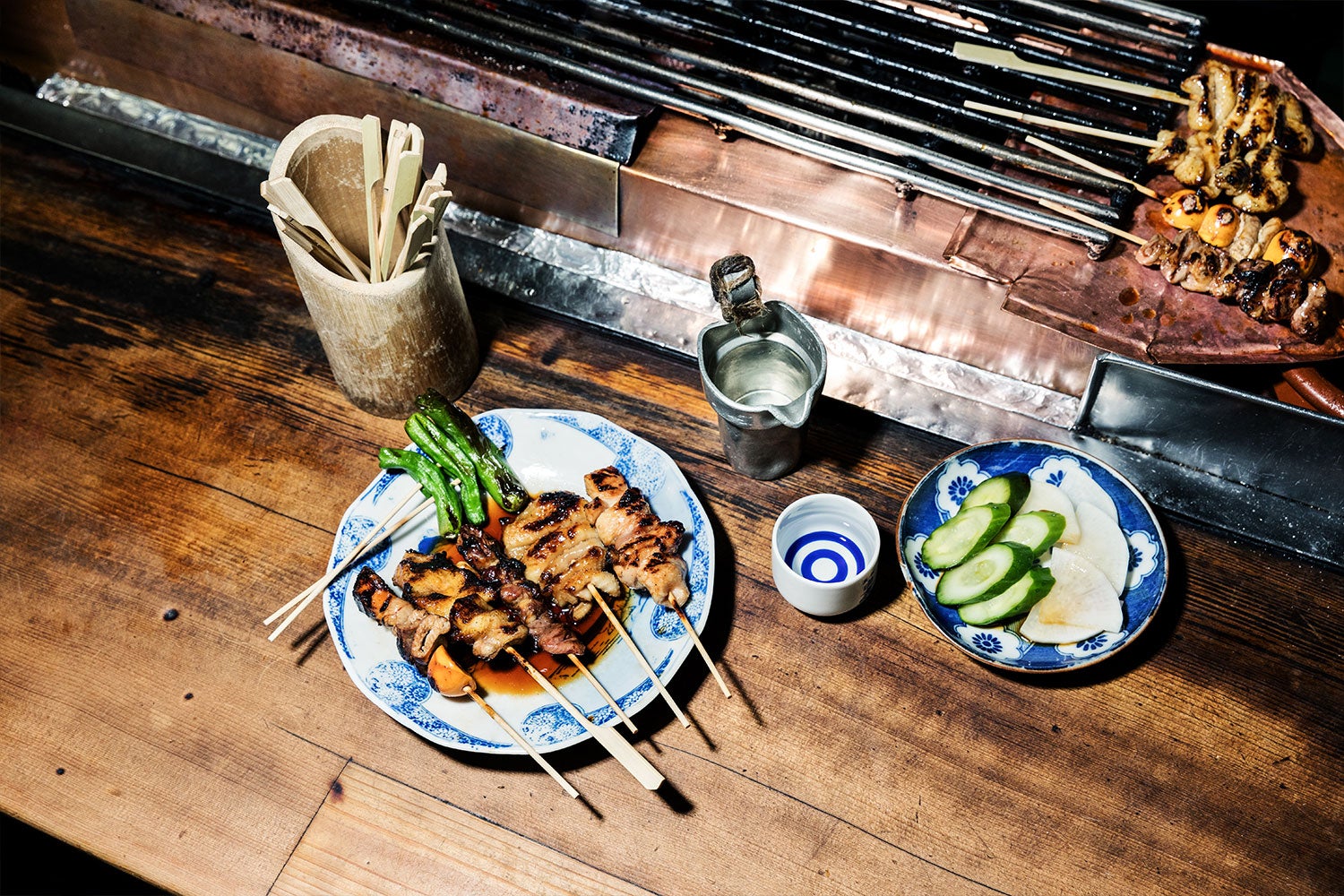
Gear, recipes, and expert advice for Japanese grilling mastery at home and in the backyard.
Dip, grill, dip, dip, grill, grill, dip, grill. The pageantry of Japanese yakitori—the grilling of a dozen chicken parts over charcoal using thin wooden skewers—takes place around the world each day at smoky restaurants and lounges from Shinjuku to Salt Lake City. But as a backyard exercise for experienced grillers, as well as less-experienced chicken fans seeking a summer project, the cooking technique is often overlooked. I’ve always wondered why this was the case.
After speaking with several experts in the field, it’s clear that specialty grills and imported charcoal are only part of the story, and that learning to butcher a chicken into its various cuts, like kawa 皮 (skin and neck), tsukune つくね (meatball), hatsu ハツ (heart), momo もも (thigh), and nankotsu 軟骨 (cartilage), is a very rewarding skill.
I was introduced to the backyard yakitori setup by my friend the amazing LA photographer Dylan James Ho. During the early days of the pandemic, Dylan would go live on Instagram, backed by a soundtrack of EPMD and Black Moon, and narrate as he cooked the various cuts of chicken. Dylan has long had an interest in yakitori, and last year he reported an all-time favorite TASTE story, “What’s in a 100-Year-Old Tare?” Tare, a yakitori dipping sauce made with a blend of soy sauce, sake, and mirin, reportedly gets better with age, so Dylan was certainly onto something.
Keeping Dylan’s approach in mind, I’ve compiled a compact guide for starting your own backyard yakitori adventure. I was lucky to have two experts guide me through a rundown of gear, recipes, and additional reading. Sho Spaeth is an editor at Serious Eats and a reporting force in the food media scene. Sho introduced me to Yakitoriguy, an anonymous YouTuber and educator on all things yakitori. They each filled in some gaps and helped establish this starter pack for getting into the chicken grilling game.

Sho Spaeth says:
“Fans of yakitori can be a little needlessly prescriptive about tools and methods, particularly with respect to restaurant yakitori. I don’t know if that’s a particularly helpful attitude for home cooks. At its simplest, yakitori is just chicken put on a skewer, seasoned with salt, and cooked with direct heat—and for a home cook, if they can satisfy those three criteria, they can make some pretty tasty chicken skewers. I generally do not use a tare, as my preference, both at home and in restaurants, is just salt, but I sometimes use a little shichimi togarashi and some lemon. For home cooks, my advice is just to buy the best chicken you can afford if you’re making yakitori. But if all you can afford or are willing to purchase is supermarket birds, don’t let that stop you! You can still make very tasty chicken skewers with supermarket birds.”
Yakitoriguy says:
“Luckily, I’m able to speak and read Japanese, so I got to dive into the authentic recipes from Japanese videos and working at shops in Japan. Because of the lack of authentic yakitori resources in English, even to this day, I started my Instagram and YouTube tutorials. For the longest time, there has been a romanticized mystery of yakitori making—perhaps because yakitori is often imagined to be served in dark alleyway shops by a quiet Japanese master behind binchotan smoke. Like learning how to bake bread, becoming a master of the craft can take a lifetime, but learning to make yakitori at home is attainable, once you learn the basics of breaking down a whole chicken. There’s this very primal emotional response to yakitori, which, in its simplest form, is chicken meat on skewers cooked over fire. This same energy is found in cultural food all over the world, whether it’s Korean barbecue or backyard grilling in America.”
The Grill and Charcoal: The grill setup, and the charcoal fueling the fire, is critical for achieving a clean, true chicken flavor not overpowered with char. Our experts advise that a standard Weber or kamado-style ceramic grill will work great for yakitori. Importing a special yakitori grill from Japan can be pricey—but if you do decide to buy a special grill, Yakitoriguy suggests products such as YAK grills or the Bincho Grill. More important is using the correct charcoal, and binchotan is the Rolls-Royce of Japanese charcoals. Unlike cooking with lump charcoal or wood pellets, binchotan charcoal is nearly 95 percent carbon, so it’s odorless and smokeless. “This is critical to yakitori, as all you should taste are the flavors from the chicken, and not the wood smoke as you would with BBQ chicken,” advises Yakitoriguy. There are also lower-cost charcoals made from compressed wood particles available that work great, including Thaan charcoal and CHARBLOX.
The Knife: You can make approximately 26 skewers from one chicken, and the only way to get there is with a very sharp knife. Sharpness is key. Duh! But it’s also worth investing in a proper Japanese poultry knife. Yakitoriguy recommends stainless steel Honesuki like the ones by Misono or Tojiro for home chefs. I also love my $40 plastic-handled Seki Magoroku chef’s knife that I bought at Tokyu Hands in Shibuya.

Skewers: Both round and paddle-shaped skewers are popular at yakitori restaurants around the world. “The round skewers are ideal for smaller meats or fragile items like veggies, and the flat skewers are more robust and make it easier to pierce through skin,” says Yakitoriguy. Buy a set of each.
Books: Chicken and Charcoal is the debut cookbook from the acclaimed team at yakitori restaurant Yardbird in Hong Kong. The book is filled with sharp recipes and tips, as well as a good story about the founder’s love of chicken and skateboarding. And this book from Japan is hard to find, but it’s considered one of the bibles for yakitori in Japan.
Spray bottle: A yakitori chef always knows how to control the heat, fighting off flare-ups but also adding flavor with a spray of water or sake. This color-coded set is a wise investment, not just for yakitori but all grilling.
Brush: You need a really sturdy brush that won’t die around high heat. This silicone pastry brush will do just the trick.
Tips for cooking at home: “I am a little adamant that every cook, if they eat chicken, should buy whole birds and cut them up,” says Spaeth. “But here, again, taking convenience into account, our yakitori recipes on Serious Eats, developed by J. Kenji López-Alt, are geared more toward getting people comfortable with the idea and actually making the skewers at home. To that end, the recipe for a classic negima skewer (chicken and green onions) calls for chicken thighs and doesn’t ask the cook to get too fussy about the skewering.”
Recipes and Resources: I learned a great deal from YouTube and Instagram, and the first place to visit is Yakitoriguy’s How to Make Yakitori at Home playlist on YouTube. This goes along with a tutorial on tare, and a binchotan vs. lump charcoal side-by-side comparison. Serious Eats has a wealth of information about yakitori cooking, including this Kenji guide and a DIY grilling setup from Sasha Marx.
Inline photos by Dylan + Jeni